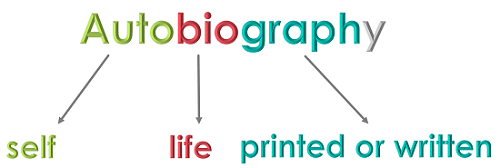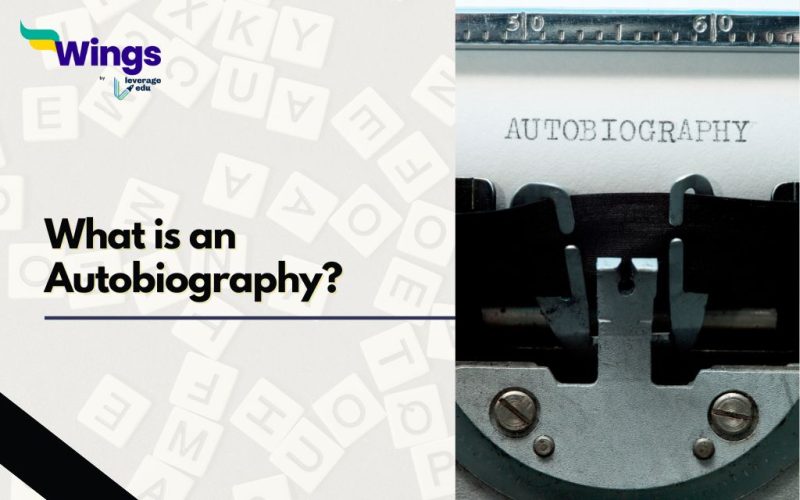Are you fond of writing? If so, you may have thought about penning down your life story. But what is writing own story known as? It is known as an autobiography, a personal narrative that offers a first-hand glimpse into the writer’s experiences, emotions, and growth. Here, we will discover what an autobiography truly is, how it differs from a biography, and explore a few remarkable examples worth reading.
This Blog Includes:
What is an Autobiography?
An autobiography is a self-written account of a person’s life. It offers a detailed narrative of one’s experiences, memories, and milestones, told from the writer’s own perspective. Unlike a biography, which is written by someone else, an autobiography allows the author to share their story in their own voice, capturing thoughts, emotions, and reflections that only they can truly express.
Often written later in life or after significant events, autobiographies help readers understand the writer’s journey, what shaped them, the challenges they faced, and how they grew over time. It’s more than just a timeline of events; it’s an intimate exploration of identity, purpose, and transformation. Whether written by a public figure or an ordinary individual, an autobiography can leave a lasting impact by offering honest, human insight into a life lived fully and authentically.

Also Read: Career in Dancing: Scope, Salary, Courses & How to Become a Dancer
Types of Autobiography
Autobiographies come in various forms, depending on the writer’s purpose, audience, and life experiences. Here are the main types:
- Full Autobiography: It is a comprehensive life story covering major events from birth to the present.
- Memoir: It focuses on specific periods or themes in the author’s life, often emotionally driven.
- Personal Essay: A shorter, reflective piece highlighting a particular moment or lesson from the writer’s life is known as a personal essay.
- Confessional Autobiography: It refers to an autobiography that is deeply personal and honest. This type reveals secrets, struggles, or past mistakes.
- Spiritual Autobiography: It centers around the writer’s religious or spiritual journey and transformations.
Autobiography vs. Biography vs. Memoir
Autobiographies, biographies, and memoirs are frequently available in almost every library or bookshop we visit. As a result, the readers are always confused about the difference between them. However, we are here to inform you that they are not the same.
| Autobiography | Biography | Memoir |
| An autobiography is an account of a person’s life written by that person or the subject themselves. | A biography is an account of someone’s life written by someone else | A memoir is also an account of someone’s life, but of a specific time in the journey of his/her life. This means it only covers a part of the author’s life |
| It is a subjective account that is written in first-person narration. | An autobiography is an account of a person’s life written by that person or the subject themselves | It is generally written in first-person narration |
| It is a primary source of information. | It is a secondary source of information | It is a primary source of information |
| They are written in chronological order, like from birth to the present day. | Biographies are also written in chronological order | Memoirs can be written chronologically, but often move back and forth in time |
| A memoir is also an account of someone’s life, but of during a specific time in the journey of his/her life. This means it only covers a part of the author’s life | The main objective is to bring out the historical or factual truth | Places greater emphasis on emotional experience and interiority rather than facts |
What to Include in an Autobiography?
You are not alone in scratching your head, unsure of what to put in your autobiography. After all, knowing what to include and exclude from your life narrative is an important aspect of how to write an autobiography. Do you pay attention to every detail? Is it true that everyone just wants to read long stories? Isn’t it possible that your autobiography will be too long?
The Movie Trailer Method is an excellent approach to think about how to write an autobiography. Focus on what would make the cut for a movie trailer of your life when deciding what to include in your autobiography:
- People with the most influence (like family, friends, mentors, coaches, etc.)
- Important events (like your origin story, vacations, graduations, life turning points, life lessons)
- Moments of emotion (When you were homeless, when you battled a life-threatening condition, or when you fell in love)
- Suspense or drama? (Did you get accepted to Harvard? Was your first operation a success?)
How to Start Writing Your Autobiography?
It is crucial to consider the critical aspects of an autobiography while writing one, since you want a story that is not only representative of your life, but also simple to read and engaging enough that the reader will not want to put the book down. So, what should you include on your list? Here is how you may start your autobiography:
Place Your Story Order
While it may be tempting to repeat a tale in the order in which you remember it, bouncing back and forth in time can be extremely confusing. It’s possible that your ideas may come out jumbled when you start pulling them out, but you must put them in the right chronological sequence. Try to keep it in order, whether you’re starting from childhood, which is the most common starting point, or having a more focused picture of a certain era of your adult life.
Speak in the First Person
People expect an autobiography to be written in the first person since it is about you. When discussing events, you might use ‘I,’ ‘Me,’ or ‘Mine,’ rather than she or he. If you’re sharing a story about a key person in your life, you’ll naturally refer to them as he or she.
Define Your Characters
Even if this is a non-fiction work, it is still important for the viewer to grasp how you fit into your family and who the people around you are. You’ll need to remember the events as well as bring your characters to life. Make sure to include essential facts about a character’s personality and how they contributed to your tale.
Getting the Facts Right
It’s critical to build your location in order to help the audience understand who shared your trip and how they influenced what occurred to you. Where were you while all of this was going on? From major information such as where you were born or raised to minor ones, such as the mouth-watering and nostalgic aroma of the Sunday roast cooking in the kitchen as you were playing with your siblings.
Do not Miss out on Little Elements
When discussing how to write an autobiography, it’s occasionally the tiny details that make work come alive. Telling spontaneous stories is very appropriate. Include them if they are part of your recollection and history. People aren’t simply interested in reading about important events; rather, they want to learn about the individuals and what they did. Who they are, what makes them tick, and don’t be afraid to relate a tale about your background, even if you think it’s trivial. Include it if you believe it is relevant.
Also Read: Popular Visual Arts Courses Abroad
Famous Autobiographies to Read
Here is an exciting list of some of the best-written autobiographies written by famous writers from around the world:
- The Autobiography of Benjamin Franklin by Benjamin Franklin
- Long Walk to Freedom by Nelson Mandela
- The Story of My Experiments with Truth by Mahatma Gandhi
- The Diary of a Young Girl by Anne Frank
- Chronicles, Vol 1 by Bob Dylan
- I Know Why the Caged Bird Sings by Maya Angelou
- Agatha Christie: An Autobiography by Agatha Christie
- Open: An Autobiography by Andre Agassi
- On Writing: A Memoir of the Craft by Stephen King
- A Moveable Feast by Ernest Hemingway
What is the Appropriate Length for an Autobiography?
There are no hard and fast rules about how long an autobiography should be, but a good starting point is between 200 and 400 pages. This can help you get your book officially published or promote your self-published book by keeping it in line with what most people expect from novels in general.
How to Write a Short Autobiography?
A short autobiography is written in the same way as a large autobiography. You just leave out more information from the narrative. You reduced everything down to the bare necessities. Alternatively, you might pick a segment of your life, like in a memoir. This usually entails minimizing the number of characters in your book, lowering the number of events and experiences, and compressing your tale to just a few key times in your life.
FAQs
An autobiography is a self-written account of a person’s life, detailing key events, personal experiences, and reflections from the author’s point of view.
Start by outlining major life events, choose a central theme or message, and write in a clear, honest voice. Include personal stories, emotions, and turning points that shaped your journey.
Begin with a powerful hook such as an important memory, a significant event, or a thought-provoking quote. This draws the reader in and sets the tone for your story.
Related Reads
We hope you understood all about Autobiography! Connect with Leverage Edu today, to read more interesting topics like these.

 One app for all your study abroad needs
One app for all your study abroad needs





















 60,000+ students trusted us with their dreams. Take the first step today!
60,000+ students trusted us with their dreams. Take the first step today!

